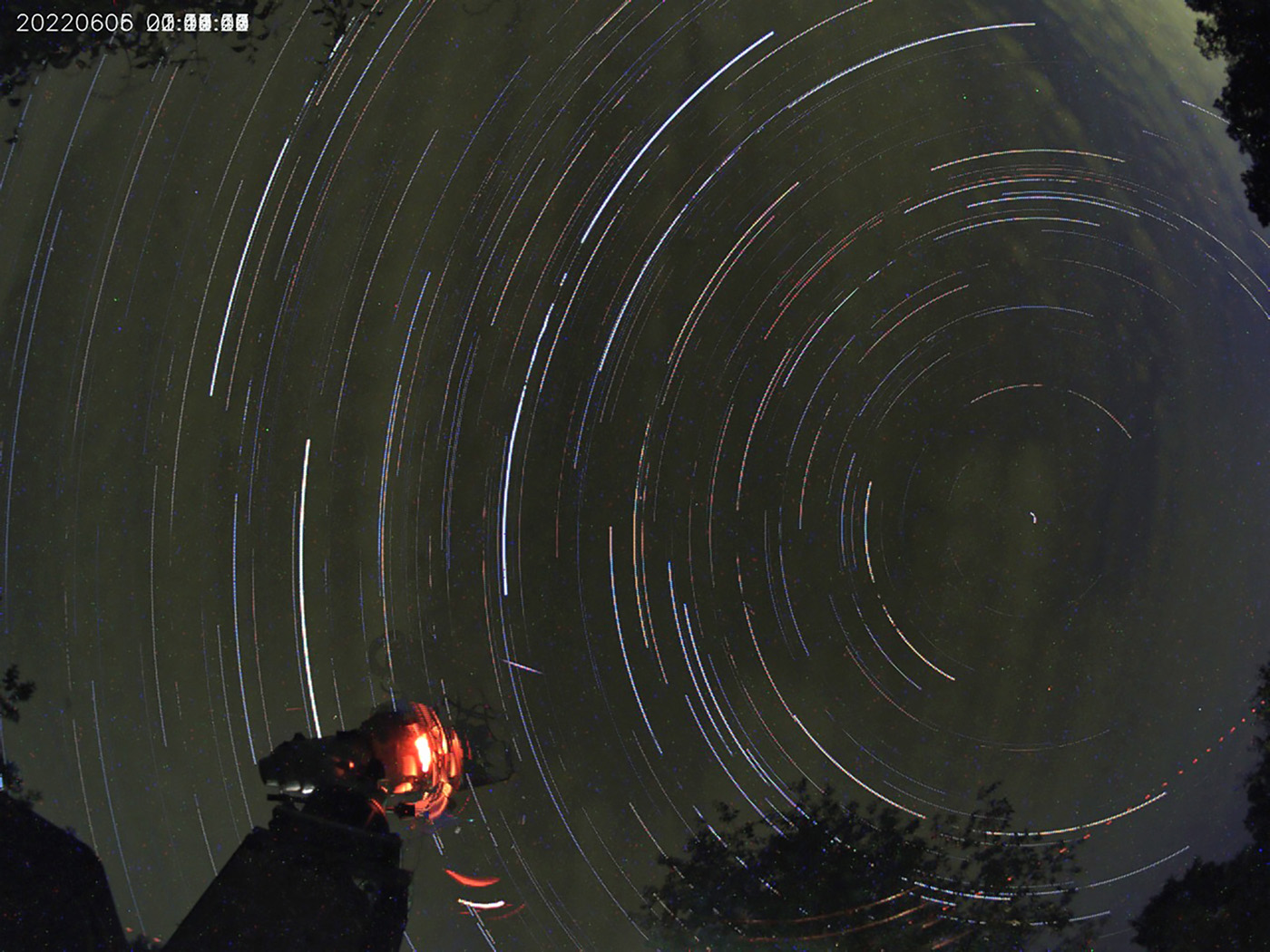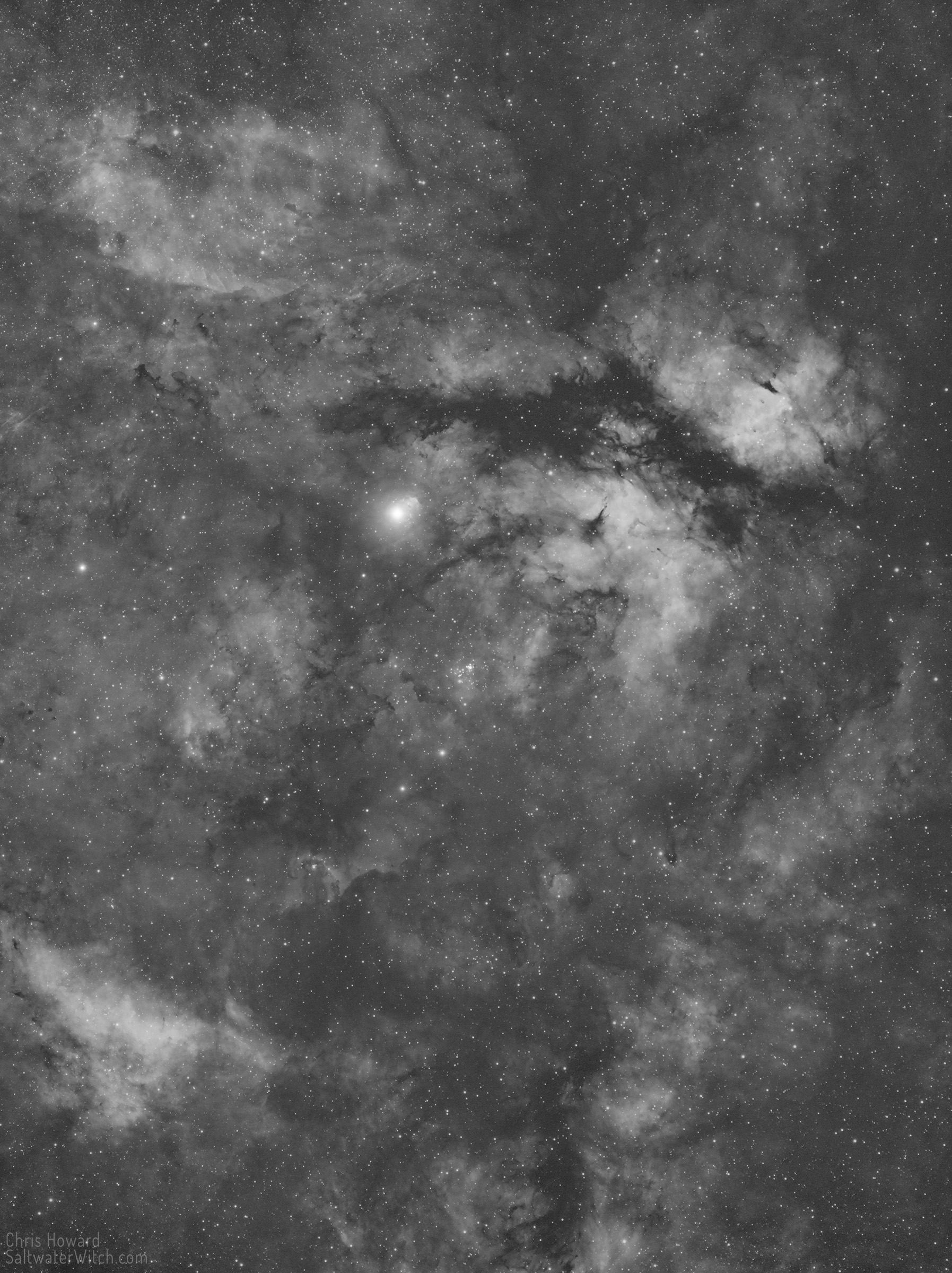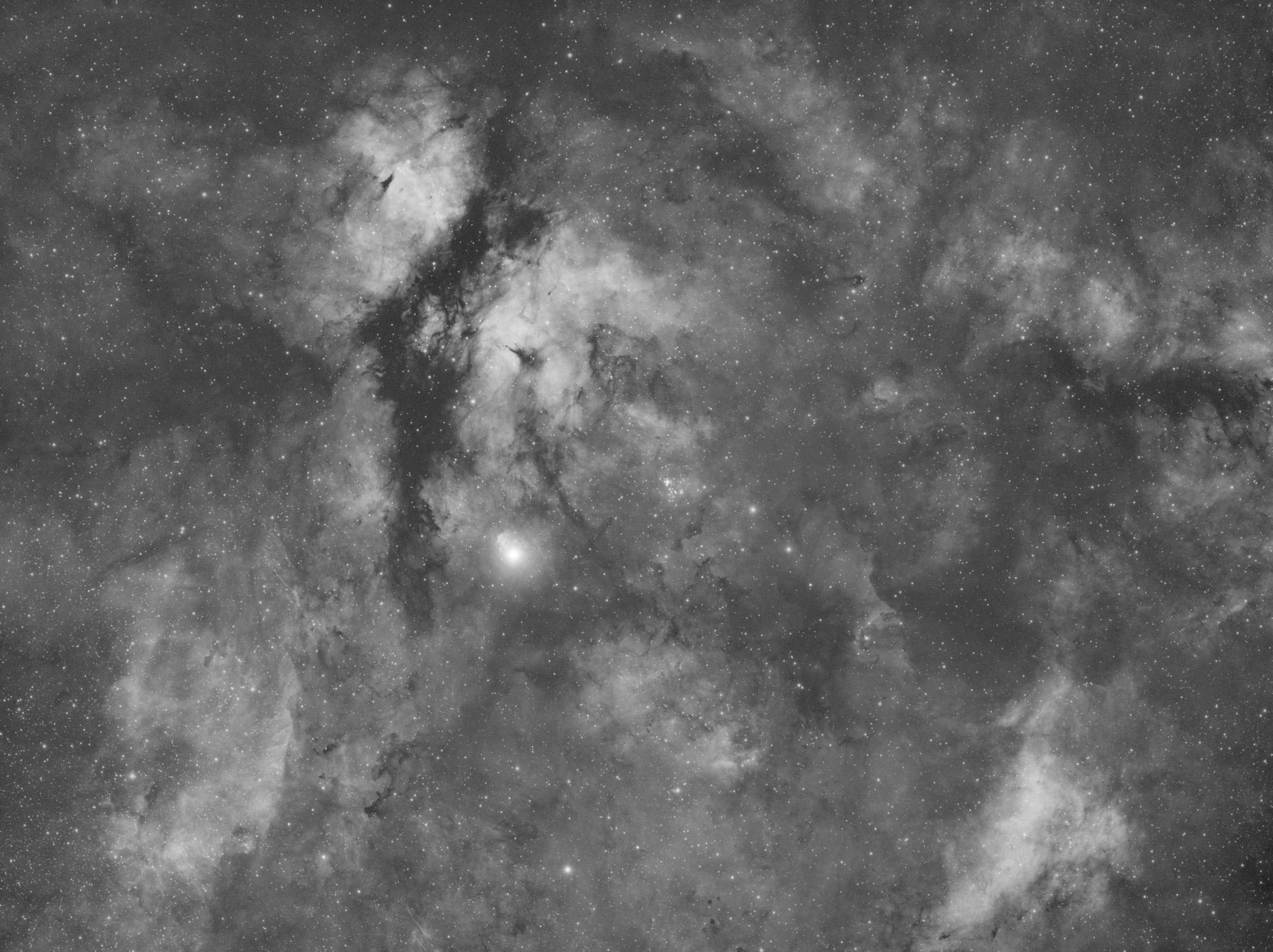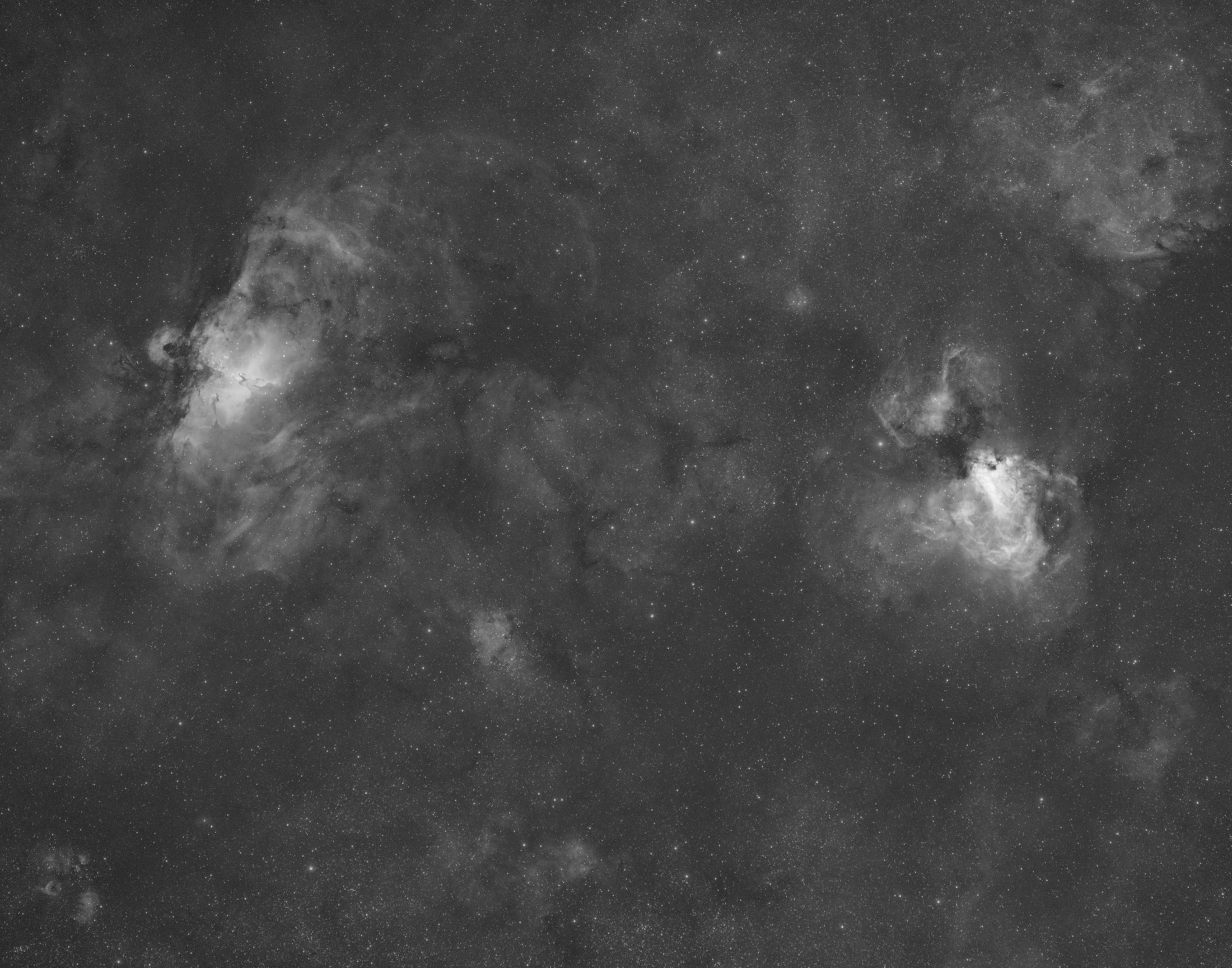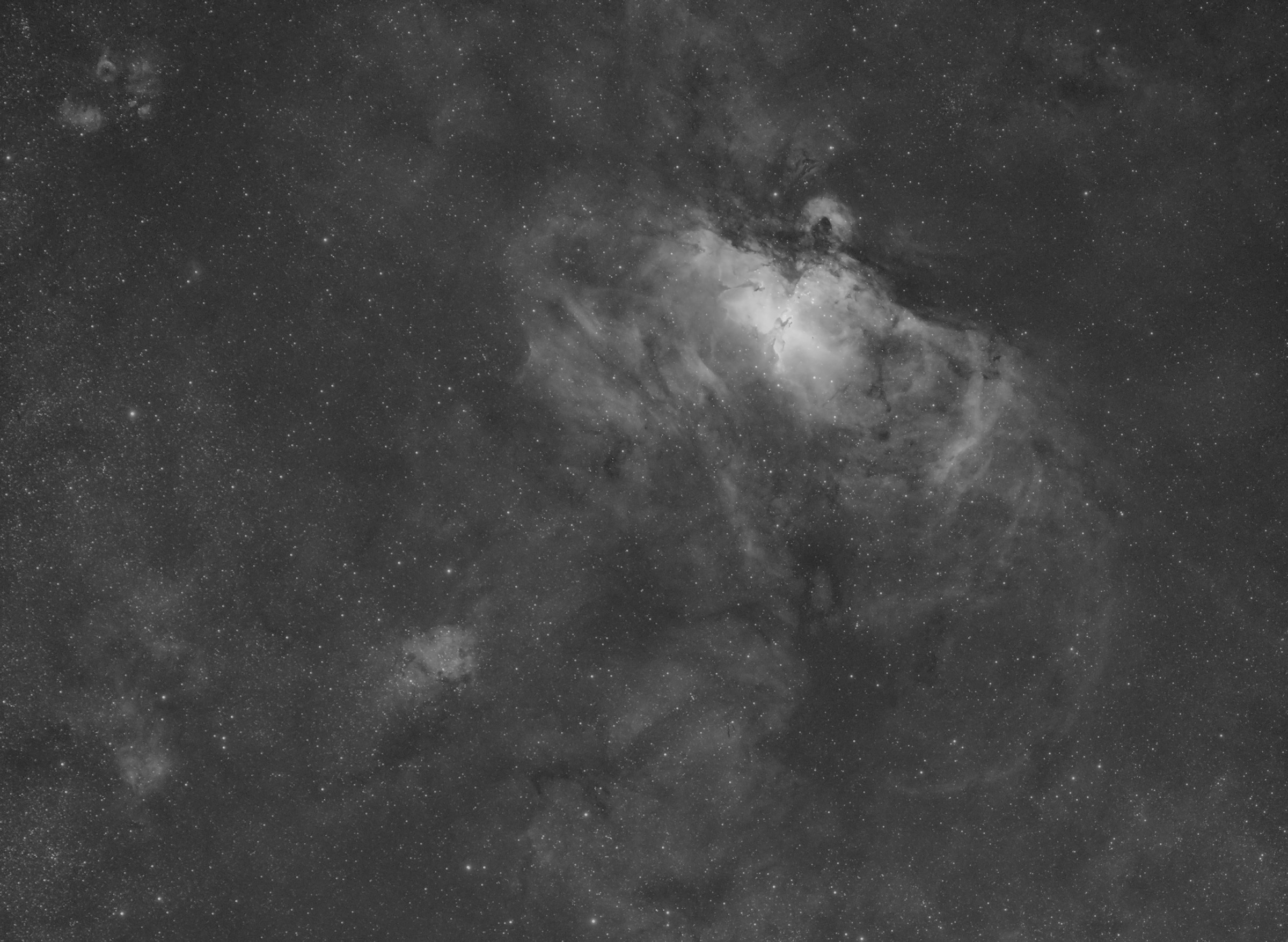The moon is bright and the clouds are fast
So, I've been goofing around with hardware, updated NINA and plugins, getting ready for the next clear night. It's raining right now. I was looking at some narrowband data for Sharpless 2-199 (Soul Nebula) I captured late last year and reprocessed the Ha data. I am especially fascinated by the differences in depth and darkness between the background and the bands of dust and interstellar gasses that twist in front of the Soul Nebula, between us and the high-energy emission of the towering clouds of hydrogen beyond. Someone commented (I think on AstroBin) on another image of mine with similar properties—that I needed to bring up the black point, that the night sky is black. But why? Who says so? The data says the background isn't as dark as the dust, so why would I want to lose that difference?
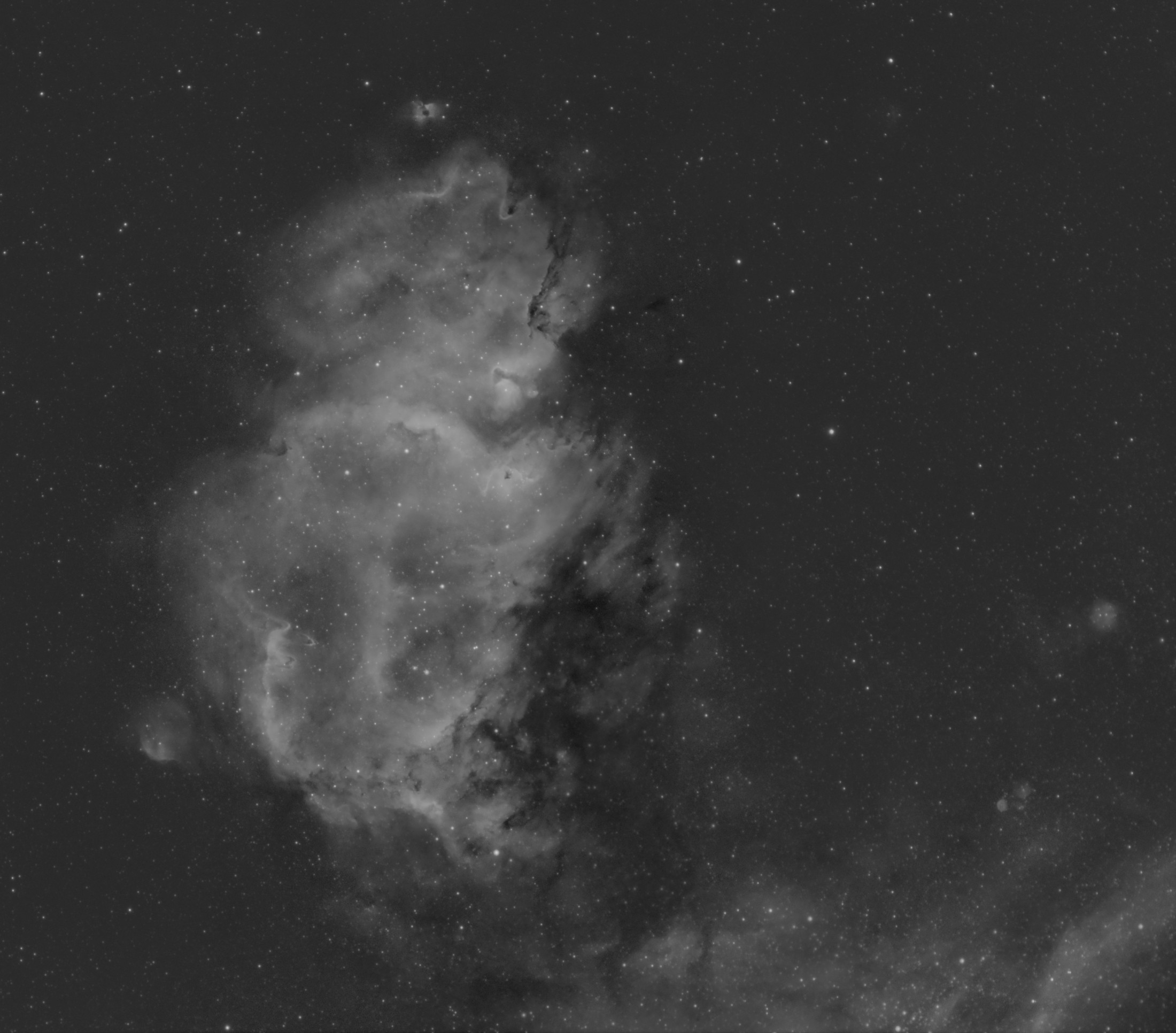
Posted June 17, 2022
The Gradual Shift Toward Portable Astrophotography
I've been thinking about portability for a while, but of course that was on hold for a couple years. I'm thinking about it again. We have pretty decent night skies here, somewhere between bortle 4 and 5. On a clear night with good seeing, Andromeda is easily visible, the Milky Way isn't super obvious but you can see it--and it's easily captured with a 10-second exposure on any camera. We have great views of the circumpolar constellations, and there's so much to image in Cepheus, Cassiopeia, and Auriga. Just these three contain some of the most beautiful nebulae in the night sky. So, not bad at all, but being so far north (+43° Lat) we're also missing a lot of great nebulae around the galactic core.
For that, we will need to go south for some imaging.
Here's a shot of a nearly full moon through the trees. I also wanted to capture the moonlight through the glass insulators on the transmission lines. About a third of the way in from bottom left is the variable double star Antares (α Scorpii) in the constellation Scorpius. Antares is also part of the Rho Ophiuchi Cloud Complex, one of the most colorful and beautiful regions in the night sky. Unfortunately, what you see here, Antares at 20° is about as high as it will get in the sky. We're just too damn north.
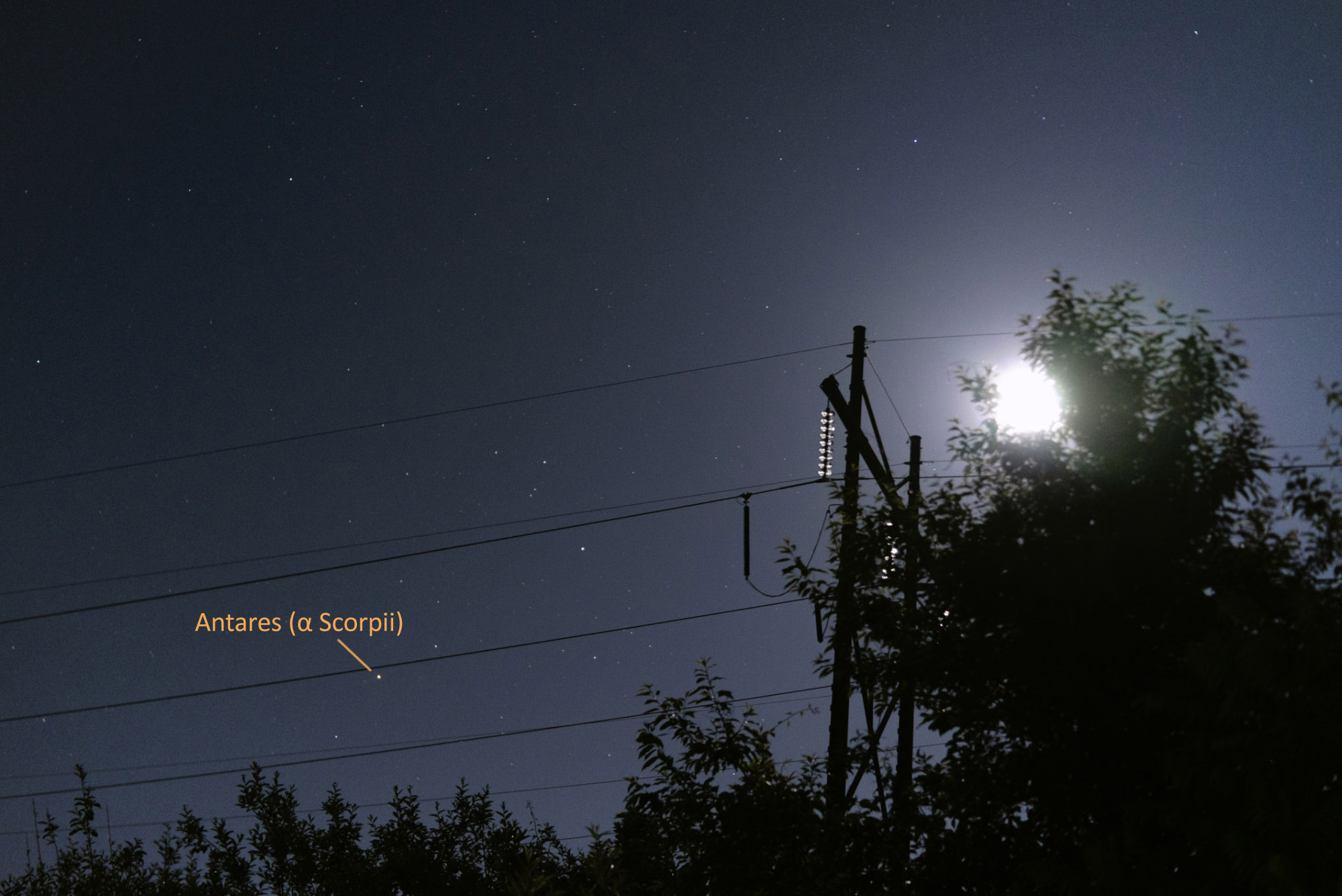
Posted June 15, 2022
Selling my Orion Atlas EQ-G
I'm selling my Orion Atlas EQ-G Mount and Tripod. This is a complete astrophotography setup with serial to USB cable as well as the Shoestring Astro BT2EQ6 bluetooth module for connecting wirelessly to the mount from a computer. The mount is in very good condition. There is some minor wear along the saddle where I have clamped on my scopes. Shoestring Astro BT2EQ6 bluetooth module supports ASCOM and INDI for mount control, or use the included USB2EQ6 Interface Cable that will run from the mount's serial port (DB9) to a USB port on your computer or astro controller. Setup manual for the BT2EQ6 here: http://www.store.shoestringastronomy.com/User_Manual_BT2EQ.pdf
Included:
- Orion Atlas EQ-G mount
- SynScan Goto Hand Controller
- Orion Atlas Tripod
- 2 x 11 lb. counterweights
- 12v 2amp power adapter
- Serial to USB cable
- Shoestring Astro BT2EQ6 bluetooth module
- Original manuals for the Orion Atlas EQ-G and the SynScan Controller
Local pickup would be great. I can meet you for delivery in the Exeter, New Hampshire area, or in Danvers, Massachusetts (north of Boston).
PayPal $1000 + Buyer pays shipping fees.
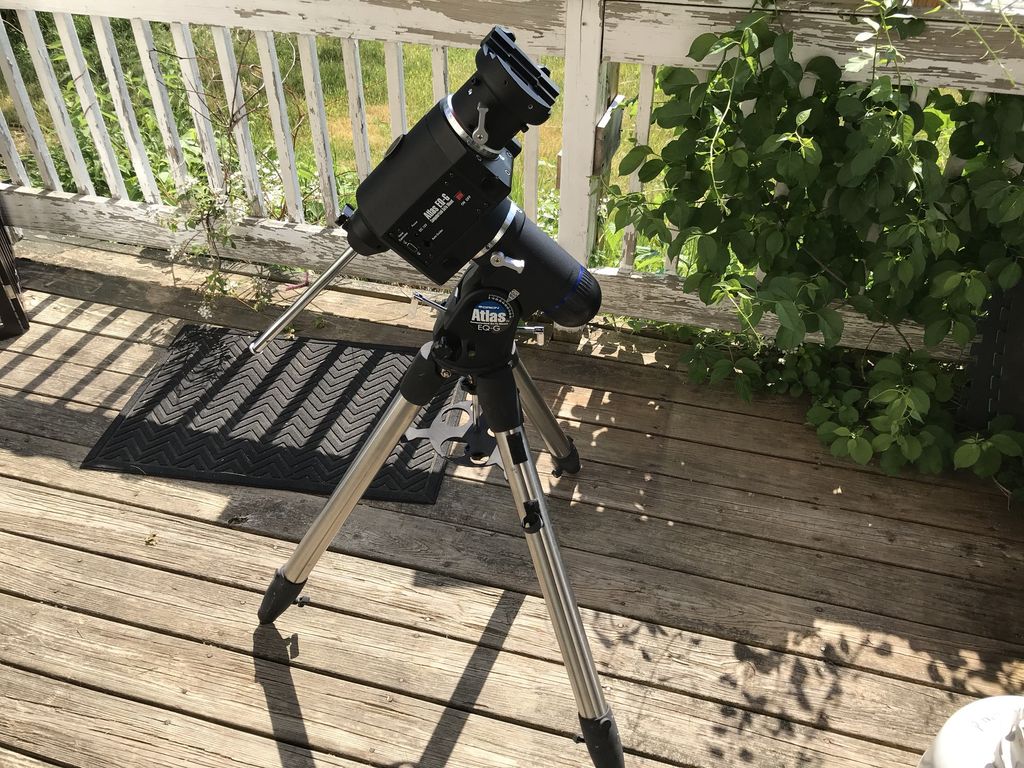
Here's the Atlas in action:
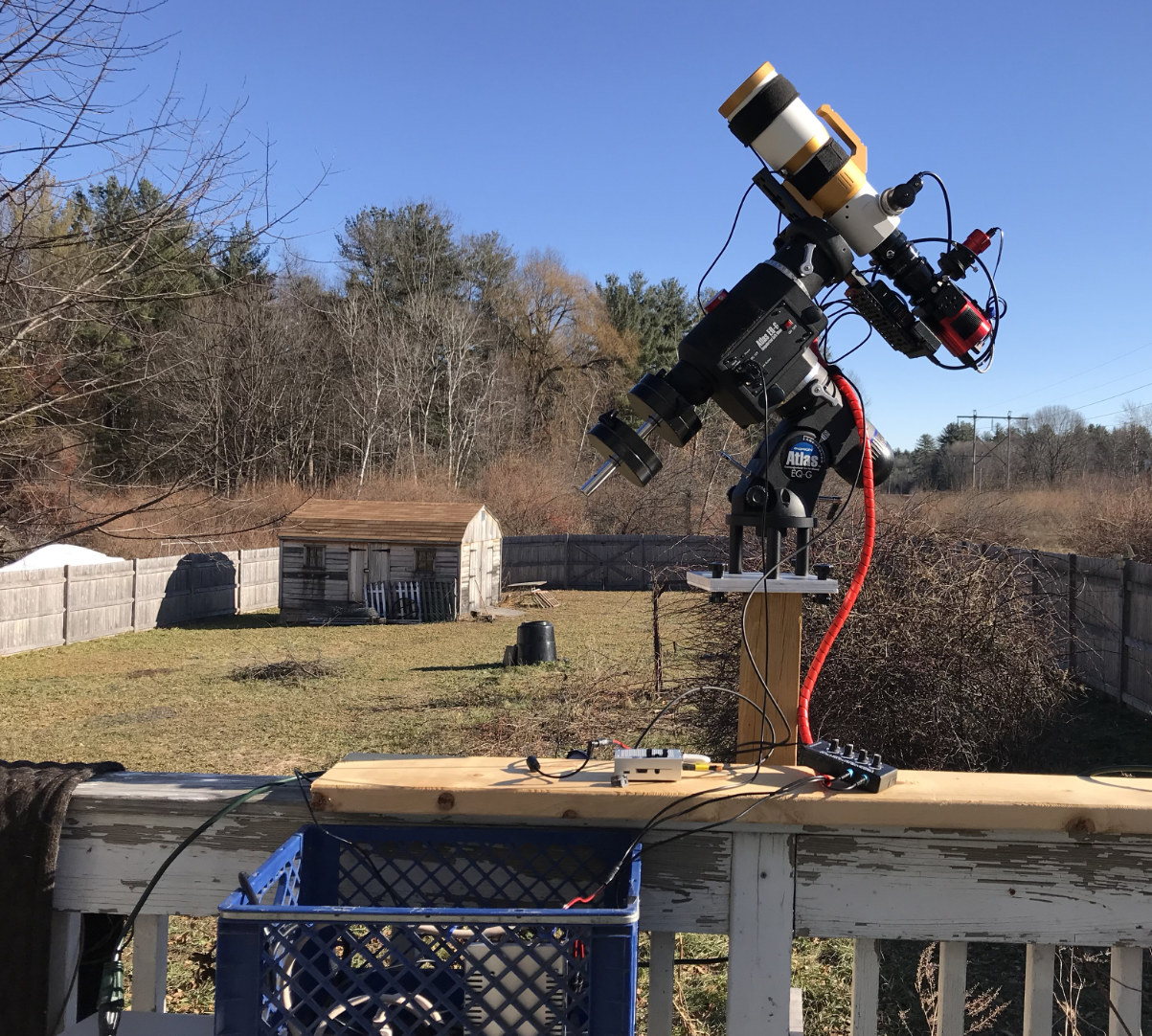
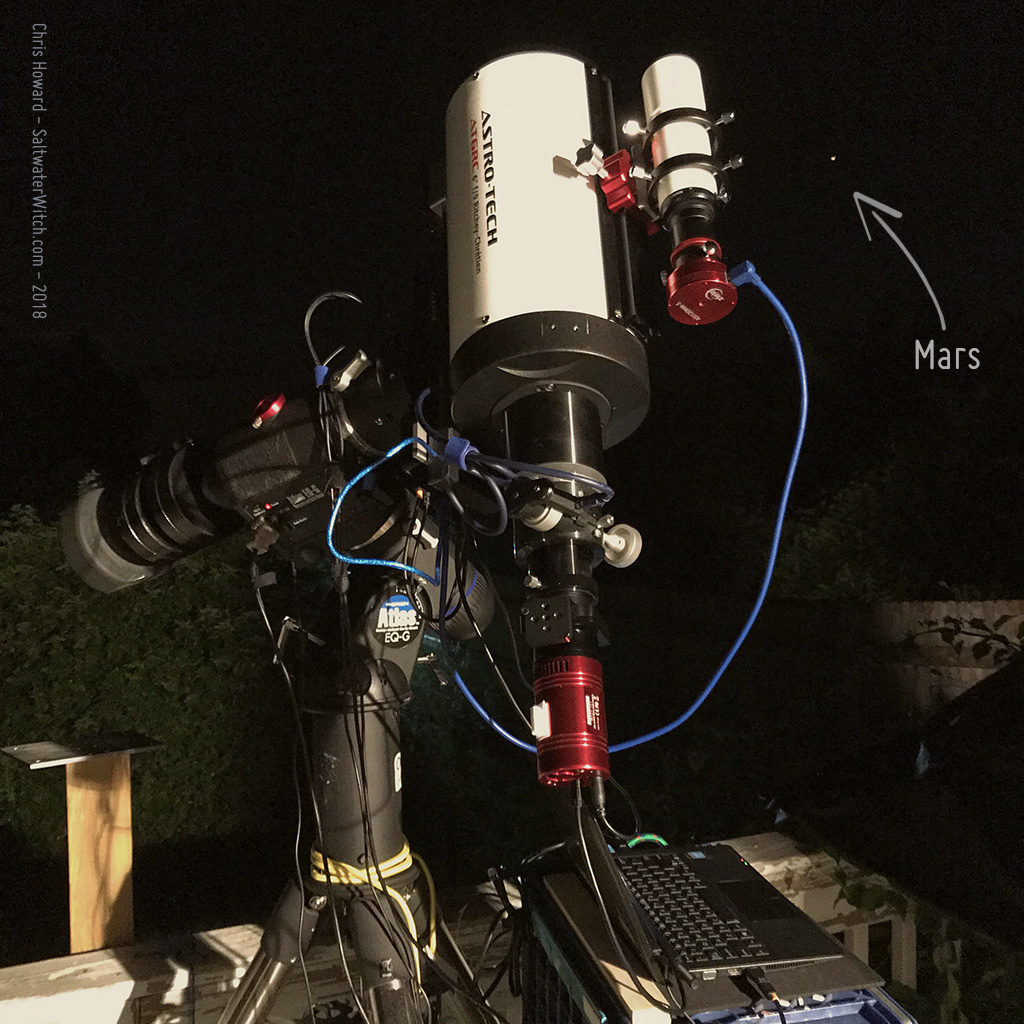
Posted June 12, 2022
Messier 16 in Ha with the "Pillars of Creation"
The famous "Pillars of Creation" from the classic Hubble (HST) image are in the core of the Eagle Nebula (Messier 16). It's no Hubble image, but still crazy what I can capture with a 250mm refractor from my backyard in New Hampshire. Here's the famous "Pillars of Creation" Hubble image: https://upload.wikimedia.org/wikipedia/commons/6/68/Pillars_of_creation_2014_HST_WFC3-UVIS_full-res_denoised.jpg
This is a crop from the larger image with the Swan Nebula from last week. Notes: 36 x 240 second subs stacked in DSS, processed in PS2022. William Optics SpaceCat 51 Apo Refractor 250mm f/4.9, Astronomik 6nm Ha filter, ZWO ASI1600MM-Pro monochrome camera, Sky-Watcher EQ6-R Pro equatorial mount.
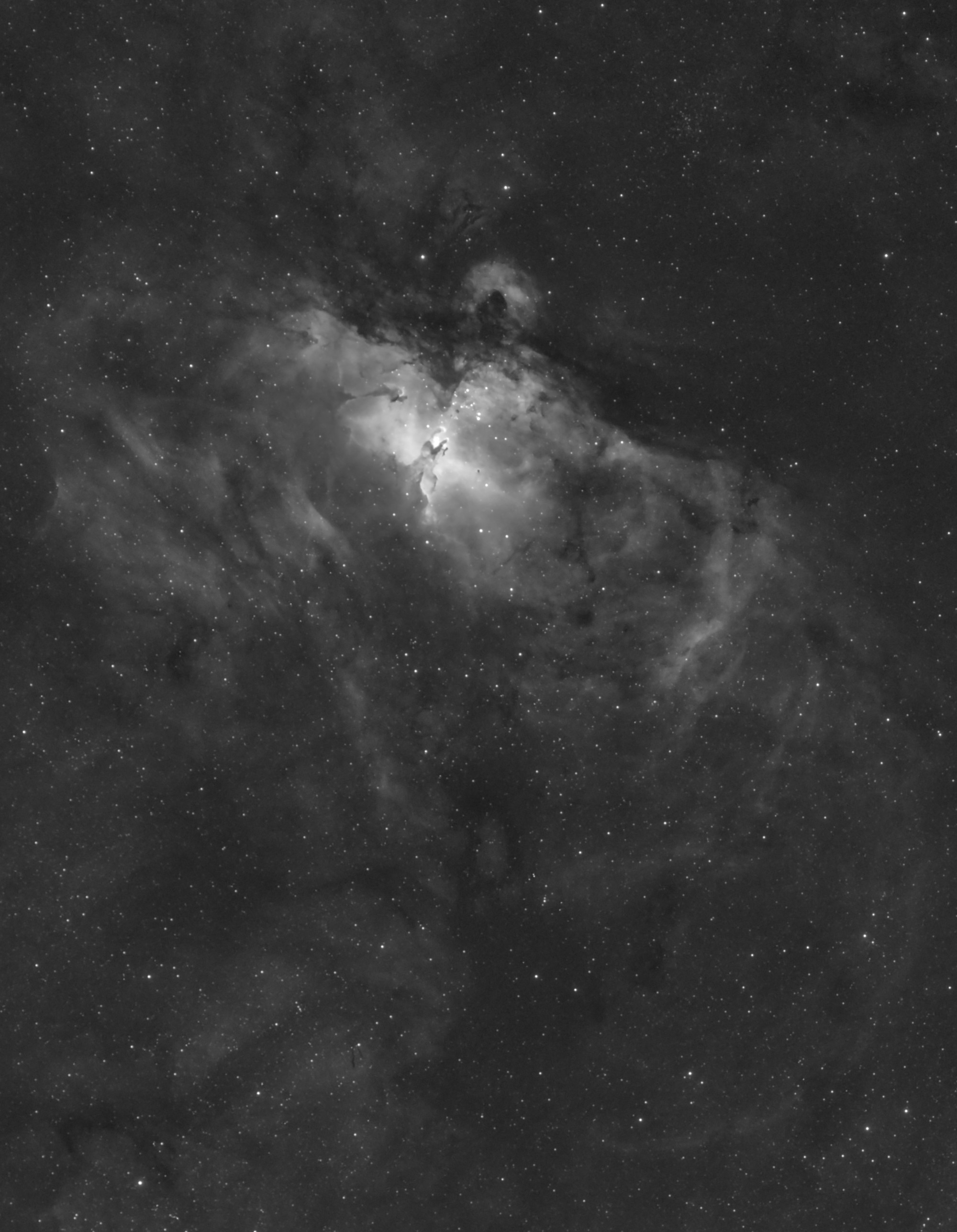
Posted June 10, 2022
The Sadr Region (IC 1318) in Hydrogen-alpha
Astronomik 6nm Ha filter, 42 x 240 second subs stacked in DSS. Click the image for the full view
Posted June 7, 2022
What the Hell Happened to Canes Venatici?
<rant-cam ON>
Holy Rutting Poseidon, the pronunciation of the constellation Canes Venatici in English is an abomination (From wikipedia: /ˈkeɪniːz vɪˈnætɪsaɪ/). Seriously, you're telling me the accepted pronunciation is Kay-neez Ven-AT-i-SAI? The old ghost of a classicist in me (although more ancient Greek than Latin) really wants me to go full Latin, something like Kahn-ess Wen-a-teekee, but Venn-ah-TEE-see sounds great, or even Venn-ah-TEE-chee. Canes Venatici is Latin for "hunting dogs". We don't have to go back that far, but why aren't we pronouncing it to something closer to Latin? There is no way in hell it should be pronounced Kayneez Ven-AT-i-SAI. Who is to blame for this barbarous pronunciation? No, seriously, I'm asking? Now I'm thinking "wikipedia" is supposed to be pronounced Why-kuh-pi-DIE-uh. That makes about as much sense.
<rant-cam OFF>
Posted June 6, 2022
It was a night of dodging clouds and narrowband imaging...
In two parts: I spent the first half of the night on IC 1318, the "Sadr Region" at the heart of the constellation Cygnus. IC 1318 is a vast and energetic emission nebula surrounding one of the brightest stars in the night sky, Sadr (γ Cygni). Click for the full sized image.
And then shifted the whole operation to the south to the constellation Serpens, just out from the Milky Way core, capturing Messier 16 (Eagle Nebula, NGC 6611), the bright nebula on the left side, and M17 (Swan Nebula, NGC 6618) on right.
Notes: William Optics SpaceCat 51 Apo Refractor 250mm f/4.9, Astronomik 6nm Ha filter, ZWO ASI1600MM-Pro monochrome camera, Sky-Watcher EQ6-R Pro equatorial mount.
Posted June 6, 2022
What did last night look like?
Here's last night's astro-imaging session captured in one image. You can see a couple batches of clouds swept through at different times. The AllSky cam, sitting on a concrete block next to the telescope, takes pictures all night long with a 6mm super-wide-angle lens. In the morning there are a bunch of time-lapse images of the night, and in this "star trails" image, all the separate images from the night are merged into one image, showing the earth's rotation. You can also see some red LED arcs (bottom left) showing where my telescope slewed or tracked a target across the sky. That bright quarter-circle in the center of the rings of star trails is Polaris, the "North Star", alpha Ursae Minoris. Polaris is a few degrees off the NCP--North Celestial Pole, a point in space that marks our planet's rotation in the northern hemisphere (you'll see the SCP in the southern hemisphere, although there isn't a bright star nearby like Polaris). Here's how to think about this: if you extended an imaginary line out from Earth's axis of rotation and you're north of the equator, the line would end, from our perspective, right there at the NCP. You can see that the star Polaris isn't dead-on with the NCP because it too rotates around it.
